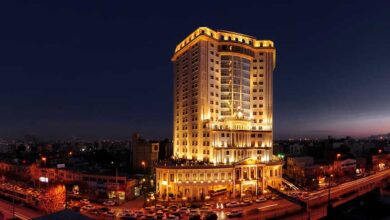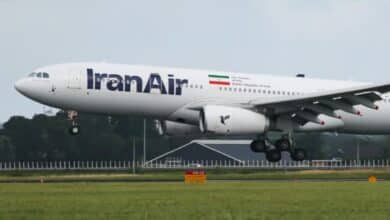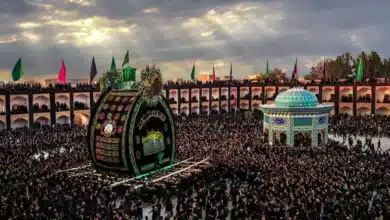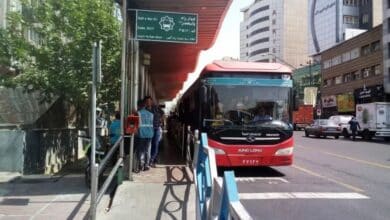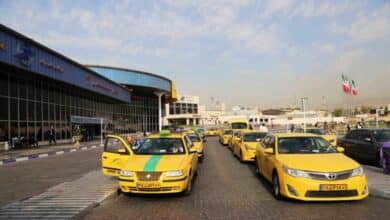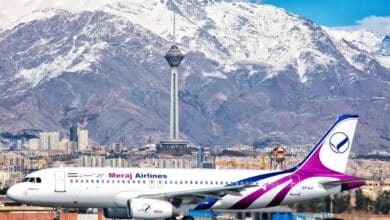Raja Trains Guide: Best Options for Iran Travel in 2025
Iran’s Raja Trains: Luxury to Budget Travel Tips
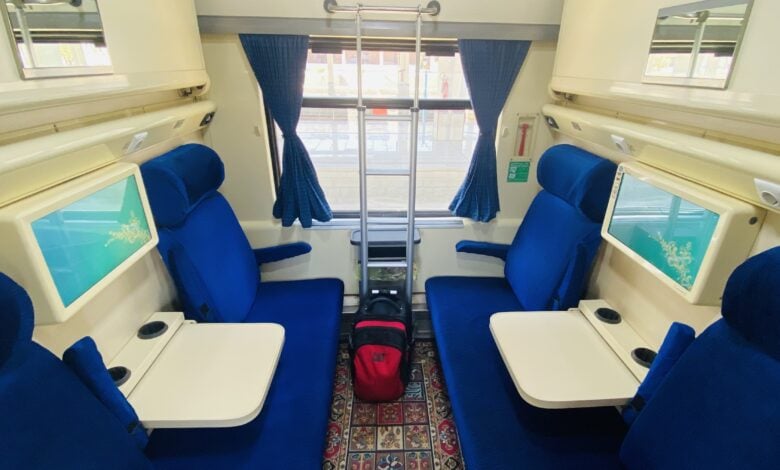
Iran’s railway system, operated by Raja, the Islamic Republic of Iran Railways, offers an affordable and scenic way to discover this fascinating country. With over 13,000 kilometers of tracks crisscrossing the nation, Raja trains cater to every traveler, whether you’re seeking budget-friendly options or luxurious journeys.
Book train tickets in Iran online
Book your train ticket in Iran at the lowest prices and embark on a journey to explore Iran’s rich culture and history with affordable, reliable train tickets.
For first-time visitors, navigating Iran’s rail network might seem daunting, but this guide breaks it all down—covering the history, train types, amenities, and practical tips to make your trip unforgettable.
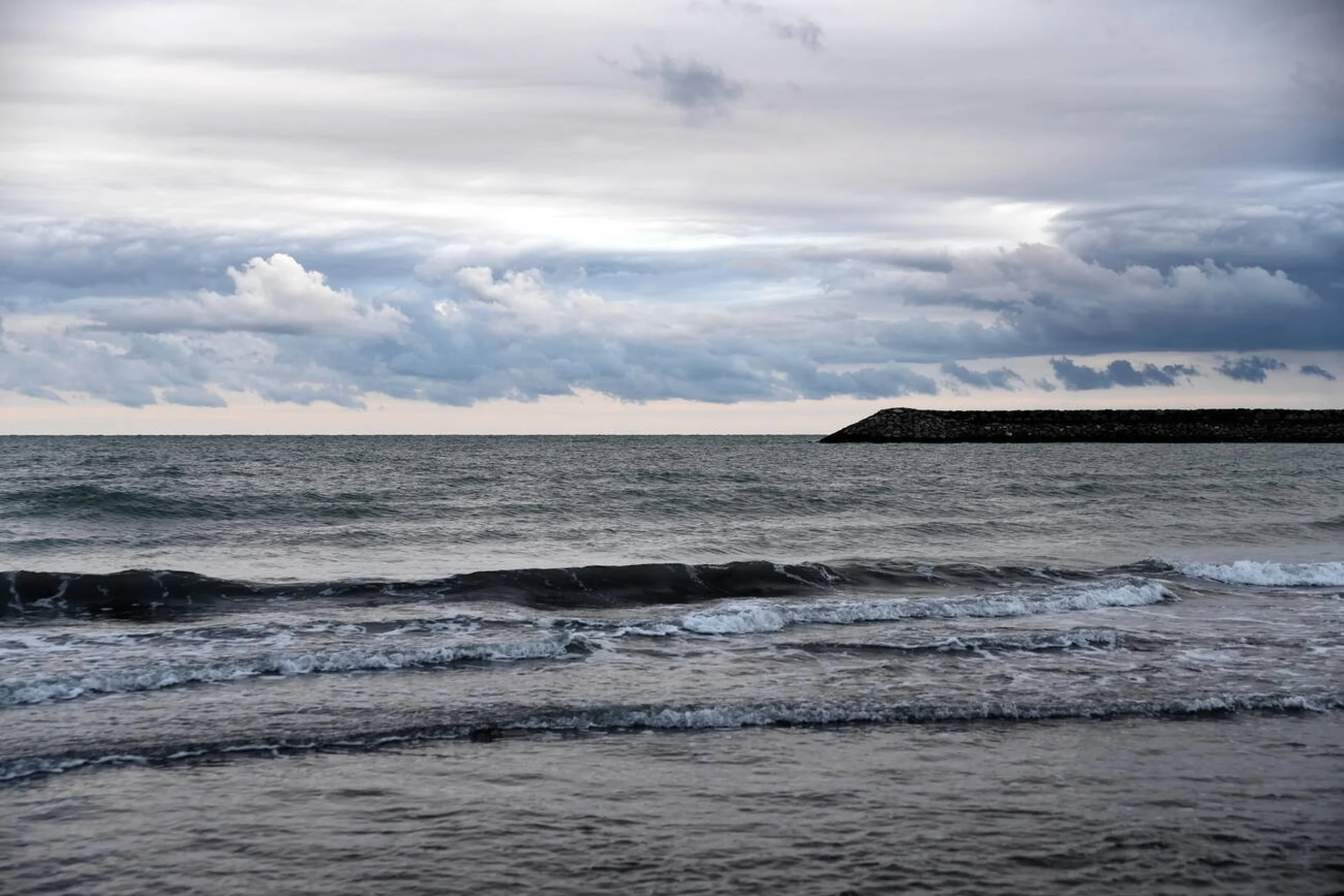
Contents
A Brief History of Iran’s Railways
Iran’s railway story begins in the 19th century under the Qajar dynasty. The first rail line, stretching 8.7 kilometers between Tehran and Rey, opened on August 9, 1888, during Naser al-Din Shah’s reign. Built by a Belgian company, it ferried pilgrims to the Shah Abdol-Azim Shrine.
Earlier attempts, like the 1848 line from Rasht to Bandar-e Anzeli, fizzled out, and another from Amol to Mahmoudabad in 1886 morphed into a telegraph route after failing as a railway.
Why did Iran’s rail ambitions stall? Between 1890 and 1910, Qajar rulers signed agreements with Russia, halting railway construction for two decades.
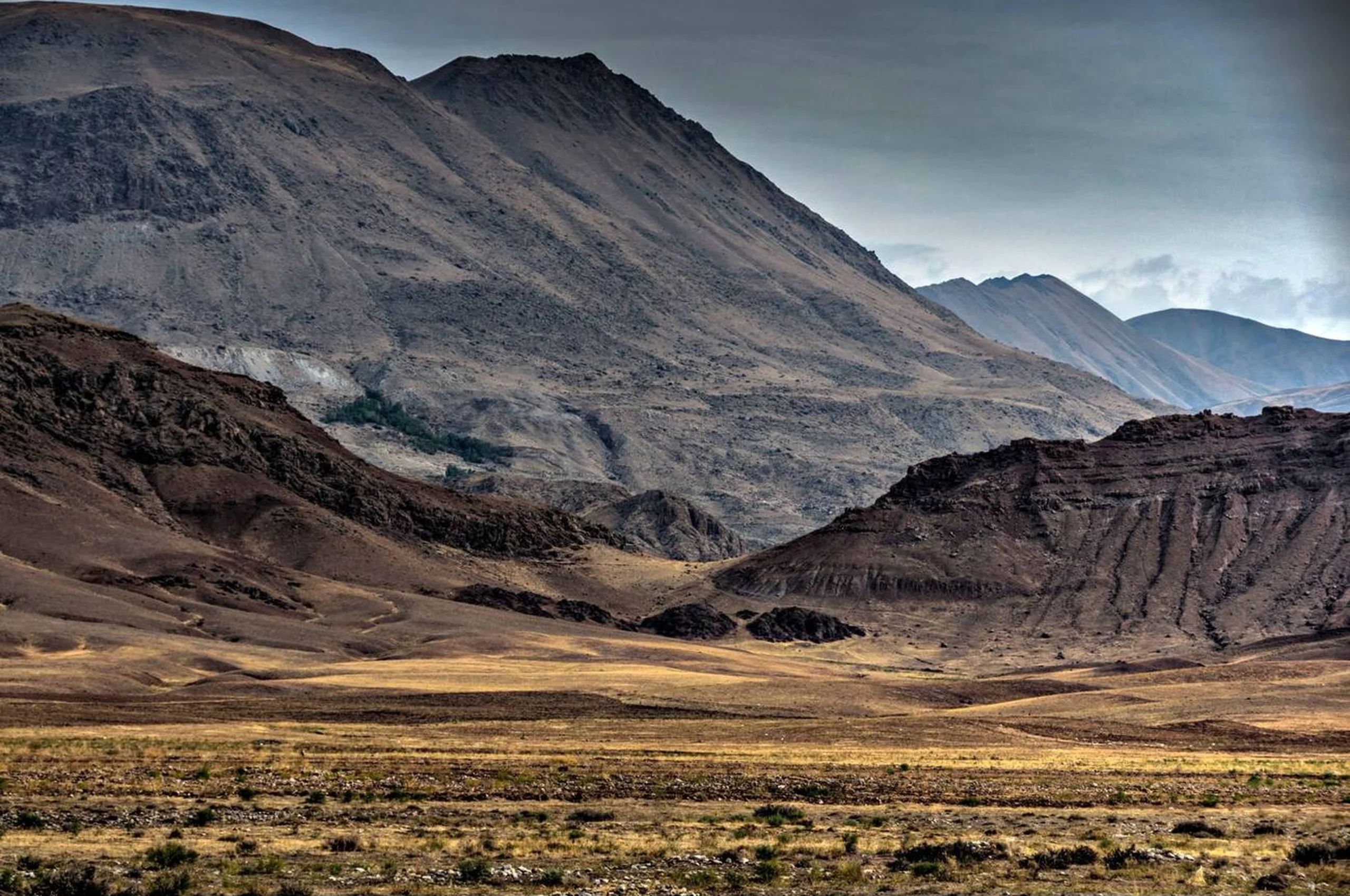
Progress resumed in 1916 with the 149-kilometer Tabriz-Jolfa line, still operational today. Another milestone came in 1920 with the broad-gauge Mirjaveh-Zahedan route, spanning 96 kilometers, reflecting British India’s influence.
The game-changer arrived under Reza Shah Pahlavi. On April 25, 1928, construction began on Iran’s first transcontinental railway, linking Bandar-e Shahpour (now Bandar-e Emam Khomeini) in the south to Bandar-e Shah (today’s Bandr-e Torkaman) in the north.
Completed on August 26, 1938, this 1,394-kilometer marvel saw two trains meet at Somayeh Station in Lorestan, a moment etched in history. Fast forward to March 6, 2019, when the Qazvin-Rasht line opened, showcasing Iran’s ongoing rail evolution.
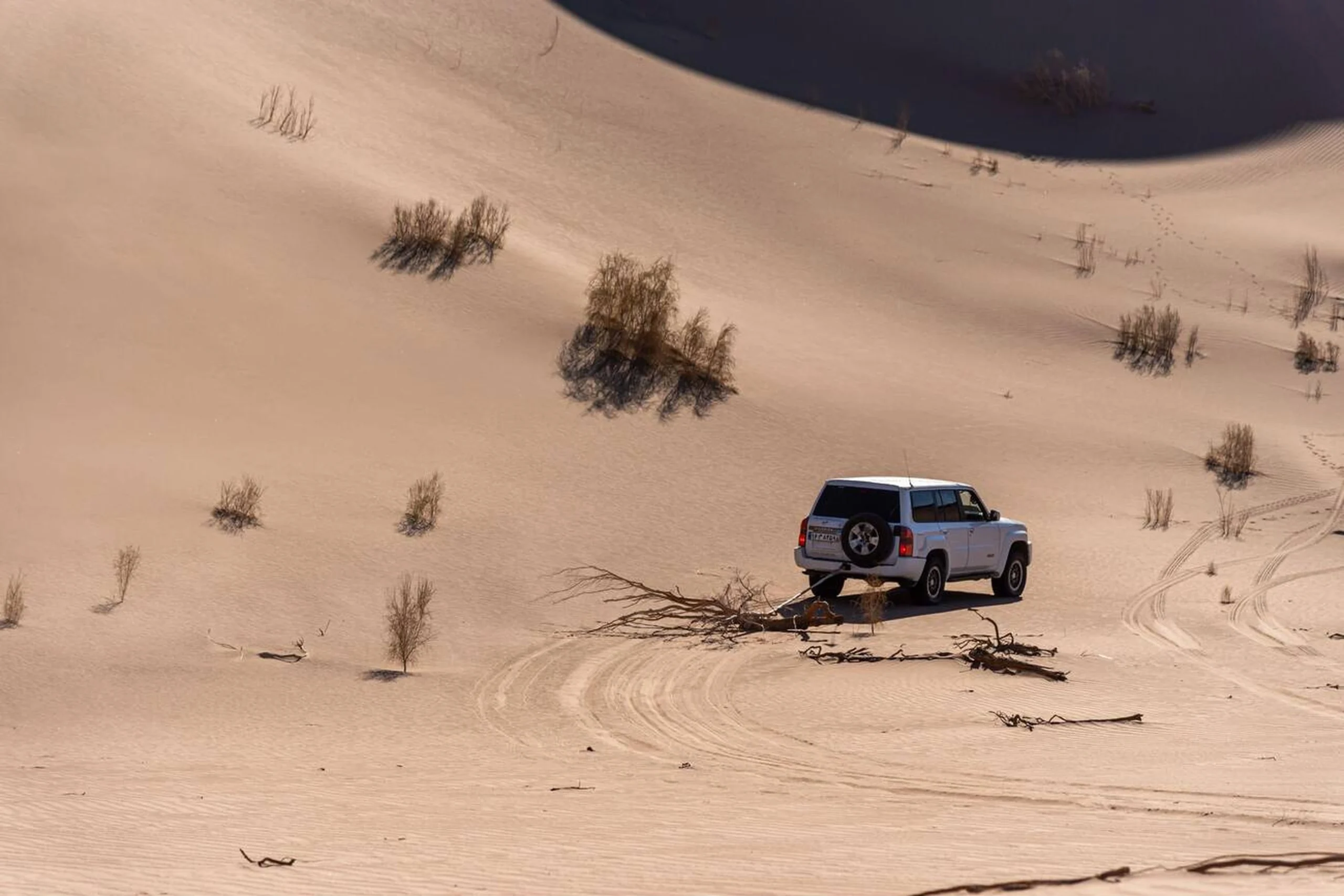
Why Choose Raja Trains?
What makes Raja trains stand out? Variety and accessibility. From budget-friendly bus-style trains to plush four-star cabins, Raja offers something for everyone. Iran’s rail network uses standard-gauge tracks (1,435 mm), aligning with global norms, except for the unique broad-gauge Mirjaveh-Zahedan stretch. Whether you’re a backpacker or a luxury seeker, Raja’s diverse fleet ensures a comfortable ride tailored to your needs.

First-time travelers will appreciate the ease of booking tickets online, a growing trend in Iran’s tourism sector. Plus, trains connect major hubs like Tehran, Mashhad, and Tabriz, alongside lesser-known gems like Lorestan’s tourism routes. Ready to explore? Let’s dive into Raja’s train offerings, starting with the most luxurious and working our way to the budget picks.
Four-Star Raja Trains: Luxury on Rails
Raja’s four-star trains promise a premium experience with four-berth compartments, perfect for small groups or families. These trains boast modern amenities, ensuring comfort on long hauls. Here’s a closer look at the top contenders.
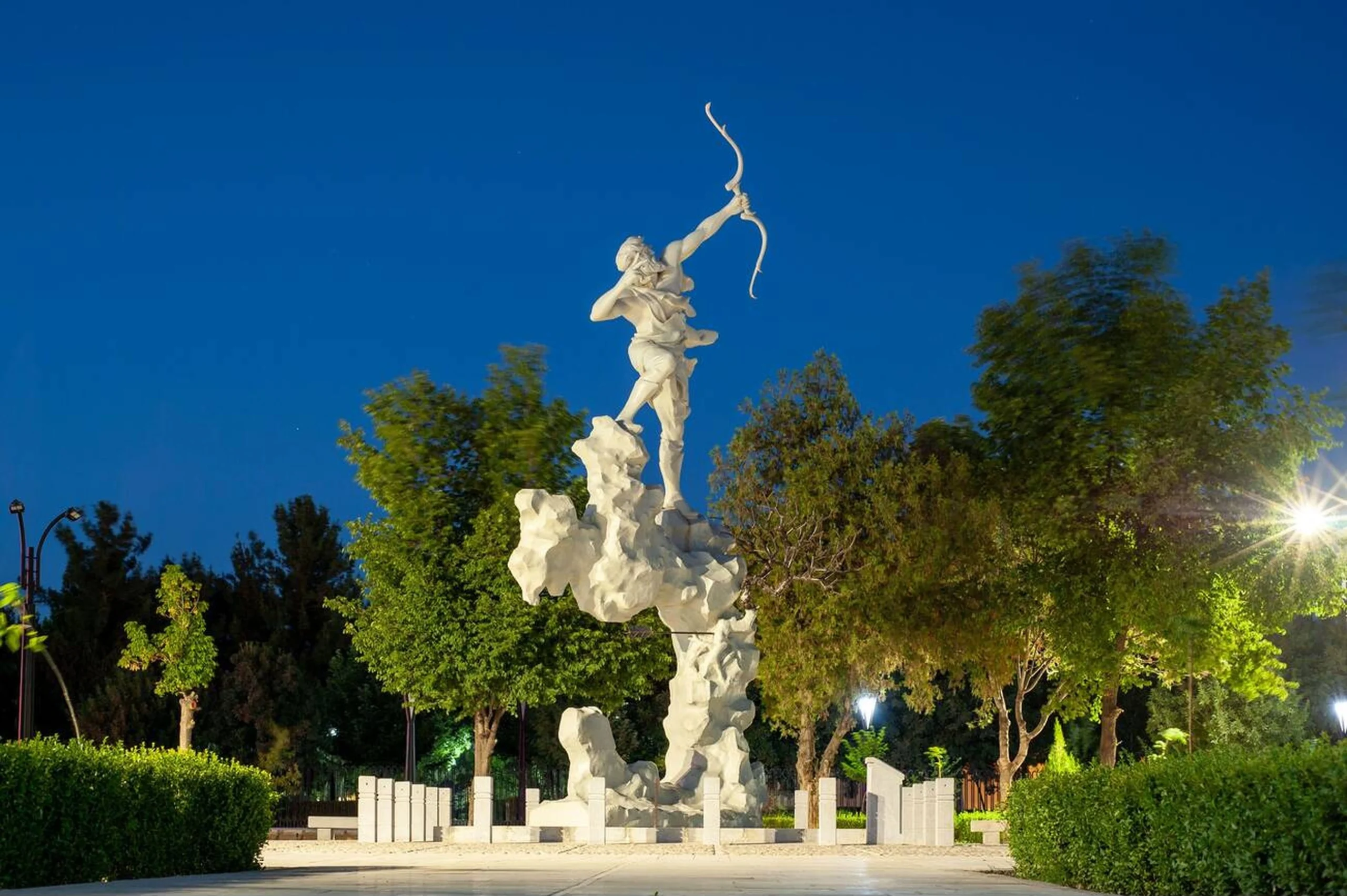
Simorgh: Iran’s Premier Train
The Simorgh train, crafted from refurbished West German wagons, sets the gold standard. Each carriage features eight four-berth cabins, a crew compartment, and two restrooms. Double-glazed windows and insulated walls keep noise at bay, while air conditioning maintains a pleasant atmosphere. Inside, you’ll find 220-volt outlets for charging devices and TV access to Iranian channels—ideal for entertainment on the 10-hour Tehran-Mashhad route.
Departing Tehran daily at 9:35 PM and arriving in Mashhad by 8:15 AM, Simorgh offers optional meal service for an extra fee. A doctor and first-aid kit on board add peace of mind. Tickets start at 130,000 IRR, making it a solid value for luxury seekers. Another route, Tehran-Yazd, expands its reach.
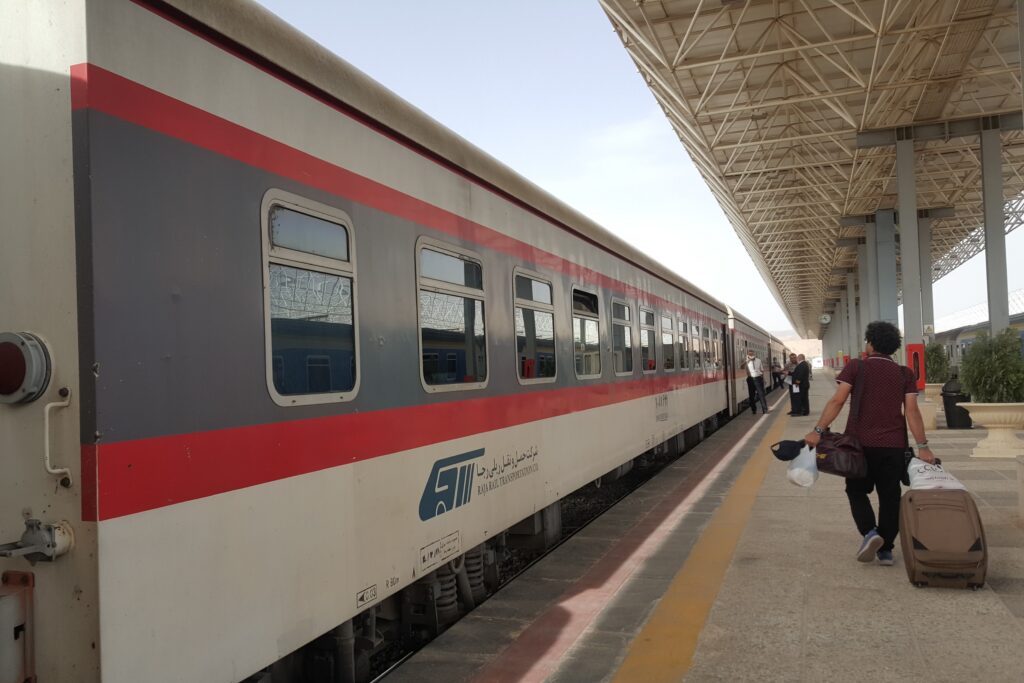
Green Train: A Favorite Among Travelers
Known simply as the Green Train, this Austrian-built beauty underwent a makeover to join Raja’s elite. With eight four-berth cabins per wagon, it mirrors Simorgh’s design—double-walled, air-conditioned, and equipped with 220-volt outlets.
Audio-visual systems keep passengers entertained, and a diverse restaurant menu (extra cost) elevates the dining experience. Its popularity stems from reliability and comfort, especially on busy routes like Tehran-Mashhad.
Plour Sabz: Affordable Four-Star Comfort
For budget-conscious luxury lovers, the Plour Sabz train shines. Built from Romanian wagons, each carriage houses 10 four-berth cabins. Double-glazed windows and walls ensure a quiet ride, while air conditioning and a central audio-visual system broadcasting movies add flair. At a lower price point than Simorgh or Green, it’s a steal for first-timers wanting quality without breaking the bank.
Amenities That Matter
What should you expect in these four-star cabins? Beyond the basics—beds, lighting, and storage—amenities like power outlets and entertainment systems make a difference. Opting for the cheapest ticket might skip meals, so weigh your priorities. On overnight trips, small comforts like soundproofing become invaluable.
Three-Star Raja Trains: Value and Variety
Not ready for four-star pricing? Raja’s three-star trains with four-berth cabins strike a balance between cost and comfort. These options cater to travelers seeking decent amenities without the premium tag.
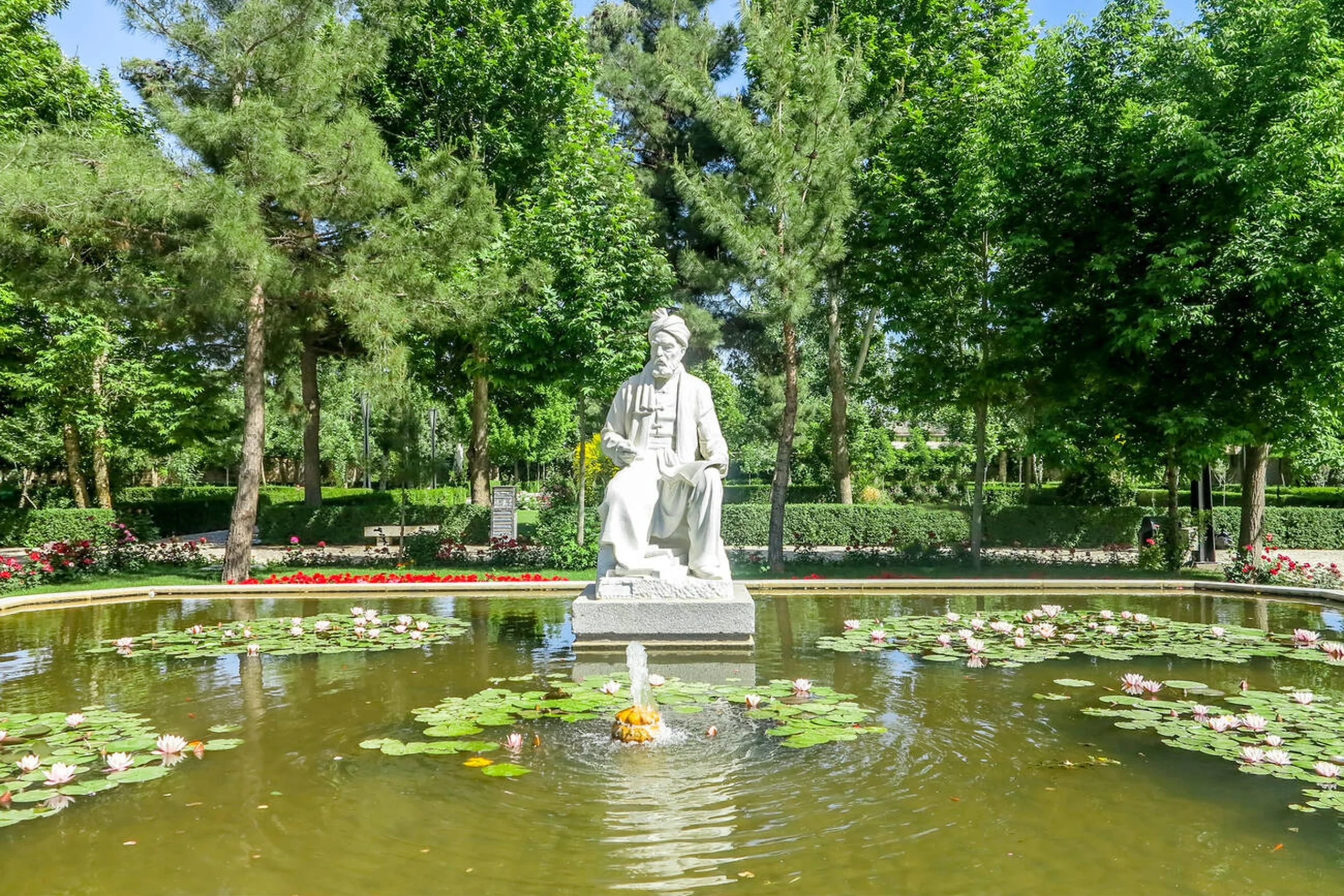
Tous (Khayyam): Budget-Friendly Classic
The Tous, also called Khayyam, hails from East German stock, refurbished for Iran’s rails. With nine four-berth cabins, two restrooms, and a crew space, it’s a practical choice. Double-walled and double-glazed, it offers TV access, 220-volt outlets, and a light canned meal included in the fare. Popular on the Tabriz-Tehran-Mashhad corridor, it’s among Raja’s cheapest four-berth options.
Delijan: French Flair on Iranian Tracks
Ever ridden a French train in Iran? The Delijan brings Gallic engineering to Raja’s fleet. Each wagon features 11 four-berth cabins, two restrooms, and a crew compartment. Air-conditioned with double insulation, it includes audio-visual setups for movies—a perk for long journeys. Its distinctive design appeals to travelers craving a unique experience.
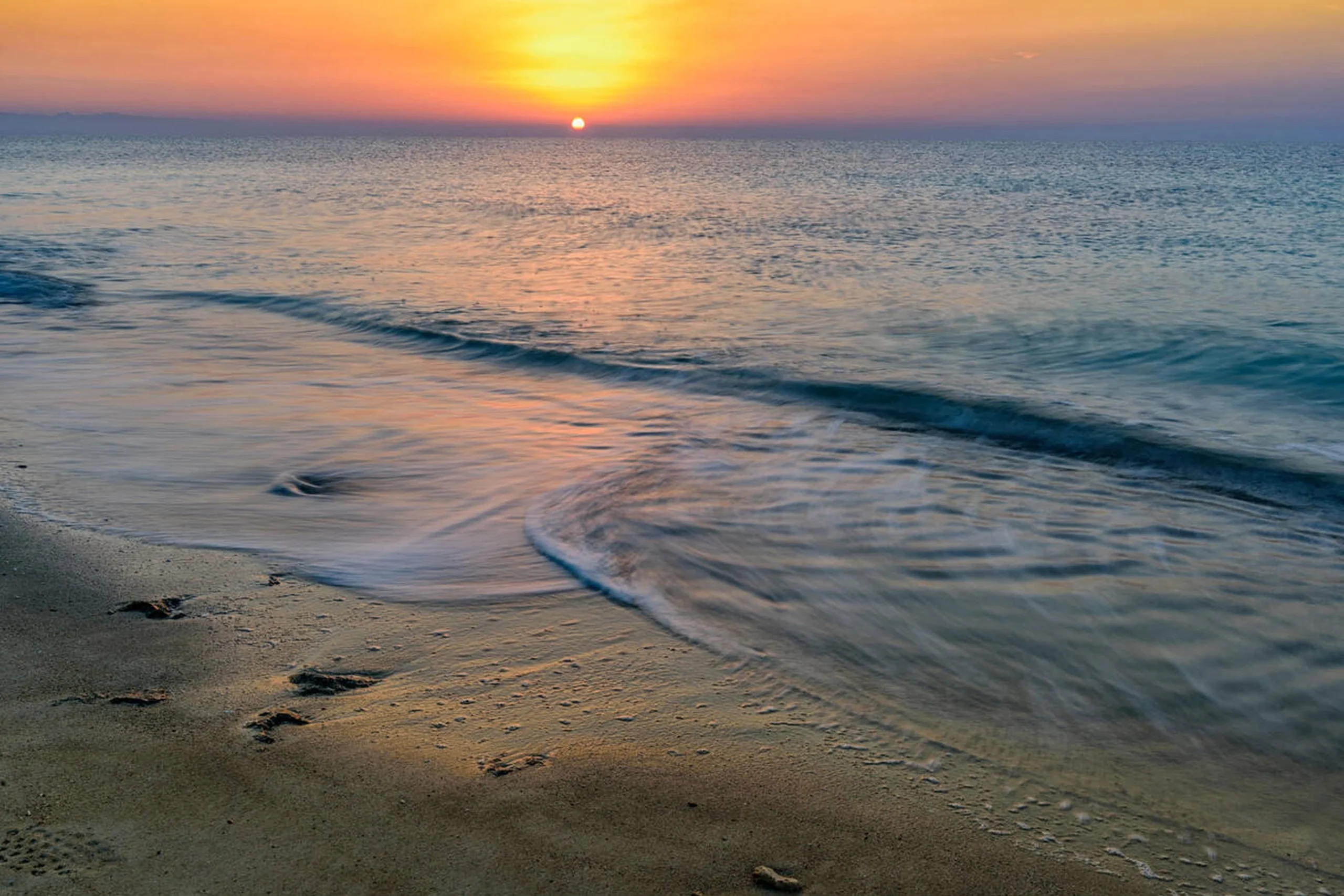
Persian Gulf: Dining Done Right
The Persian Gulf train, originally East German with 66 seats, now boasts 11 four-berth cabins after upgrades. With two restrooms and robust insulation, it matches peers in comfort. What sets it apart? Exceptional meal packages (extra cost), earning it praise for onboard dining. Audio-visual options round out the offerings.
Chinese First-Class Luxury
Raja’s Chinese first-class trains deliver modern flair with 10 four-berth cabins per wagon. Featuring both Iranian and Western-style restrooms, air conditioning, and high-quality TV systems, they cater to diverse tastes. Double-walled construction ensures quiet, and optional meal service adds flexibility.
Sahand: Spain’s Speedy Contribution
The Sahand train, built from Spanish wagons, zips along with eight four-berth cabins. Air-conditioned and soundproofed, it includes movie playback via onboard systems. Two restrooms and a crew space keep it functional, making it a fast, reliable pick for busy routes.
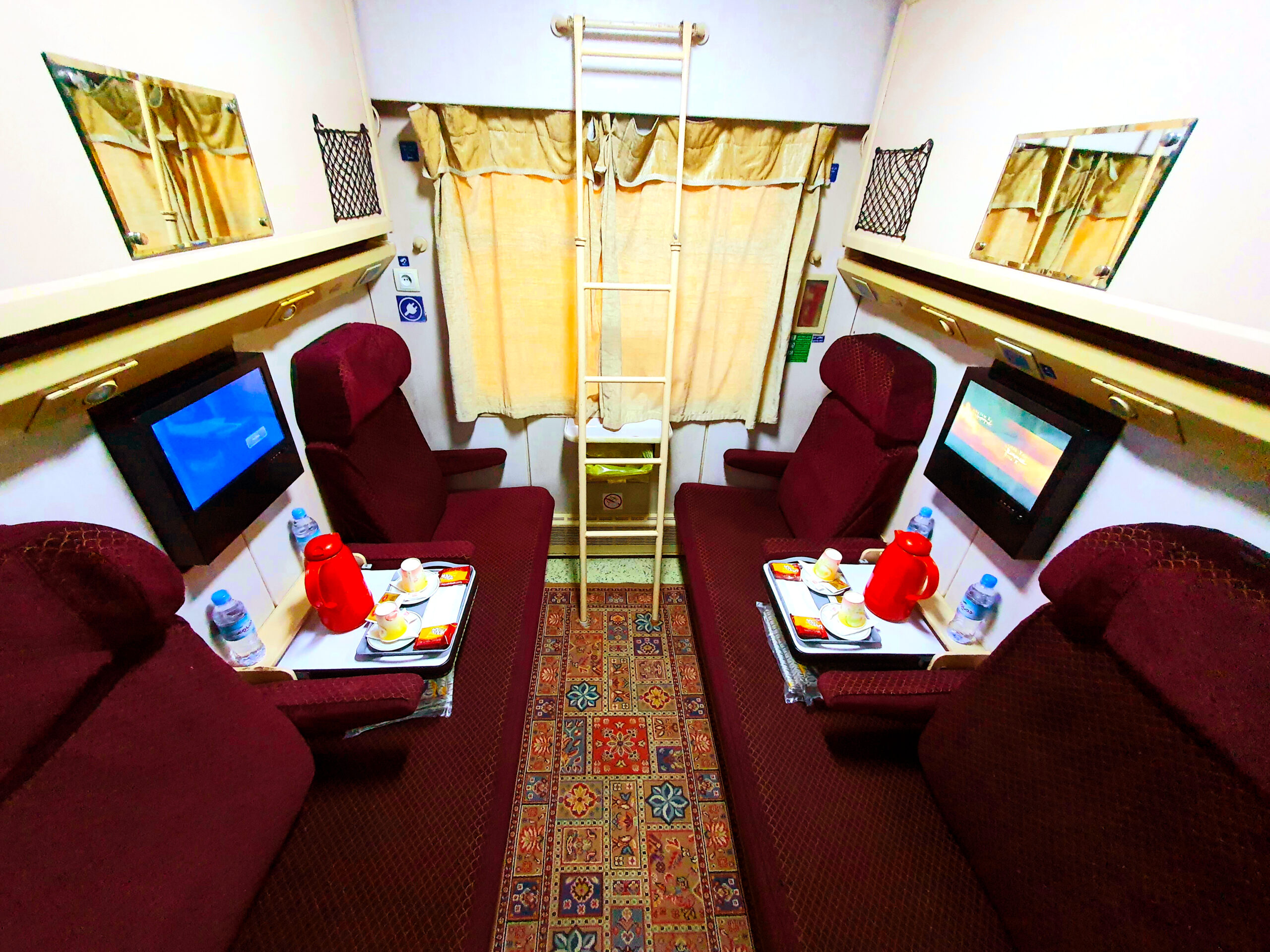
Three-Star Six-Berth Trains: Affordable Group Travel
For larger groups or budget travelers, Raja’s three-star trains with six-berth cabins offer a cost-effective solution. These trains prioritize capacity without skimping on essentials.
Spanish First-Class Six-Berth
With 10 six-berth cabins, this Spanish-built train includes air conditioning and double insulation. Two restrooms and a crew cabin between compartments five and six ensure convenience. It’s a solid choice for groups wanting comfort at a lower price.
West German Second-Class
The West German six-berth train skips air conditioning but compensates with sliding windows and steam heating. Featuring 11 cabins and two restrooms, it’s a no-frills option for short trips or warm climates.
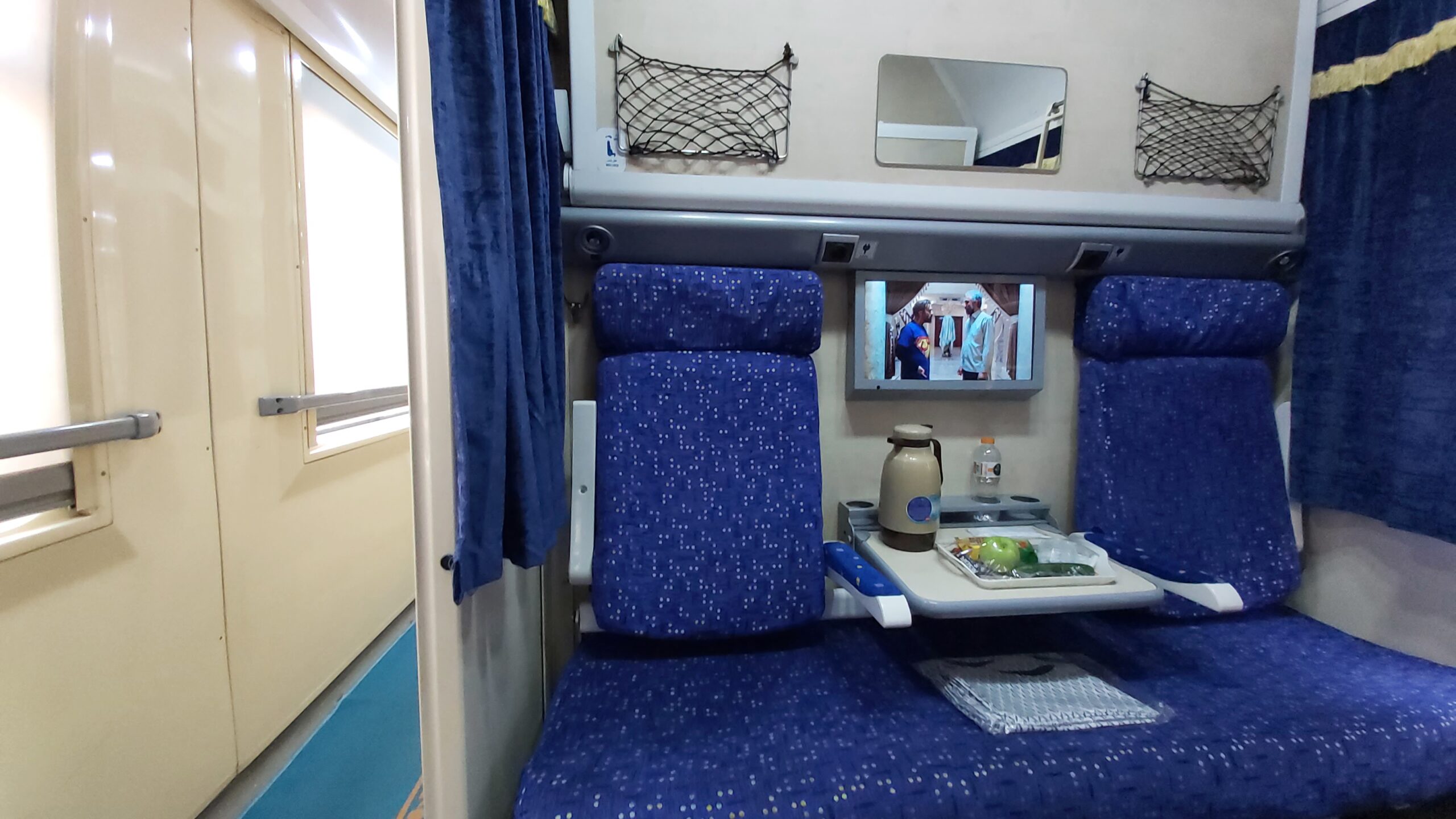
East German First-Class
This East German variant offers 10 six-berth cabins with air conditioning, though heating relies on steam. Dual restrooms (Iranian and Western) and a crew space add practicality, balancing cost and comfort.
Parsi: Three-Star with Perks
The Parsi train blends affordability with extras. Its 10 six-berth cabins feature air conditioning, double insulation, and central audio. Two 220-volt outlets per cabin and dual restrooms make it a standout for budget travelers who value connectivity.
Bus-Style Trains: Speed and Savings
Raja’s bus-style trains ditch compartments for open seating, offering speed and low fares. Perfect for short hops or cost-conscious adventurers, they’re a hit with locals and tourists alike.
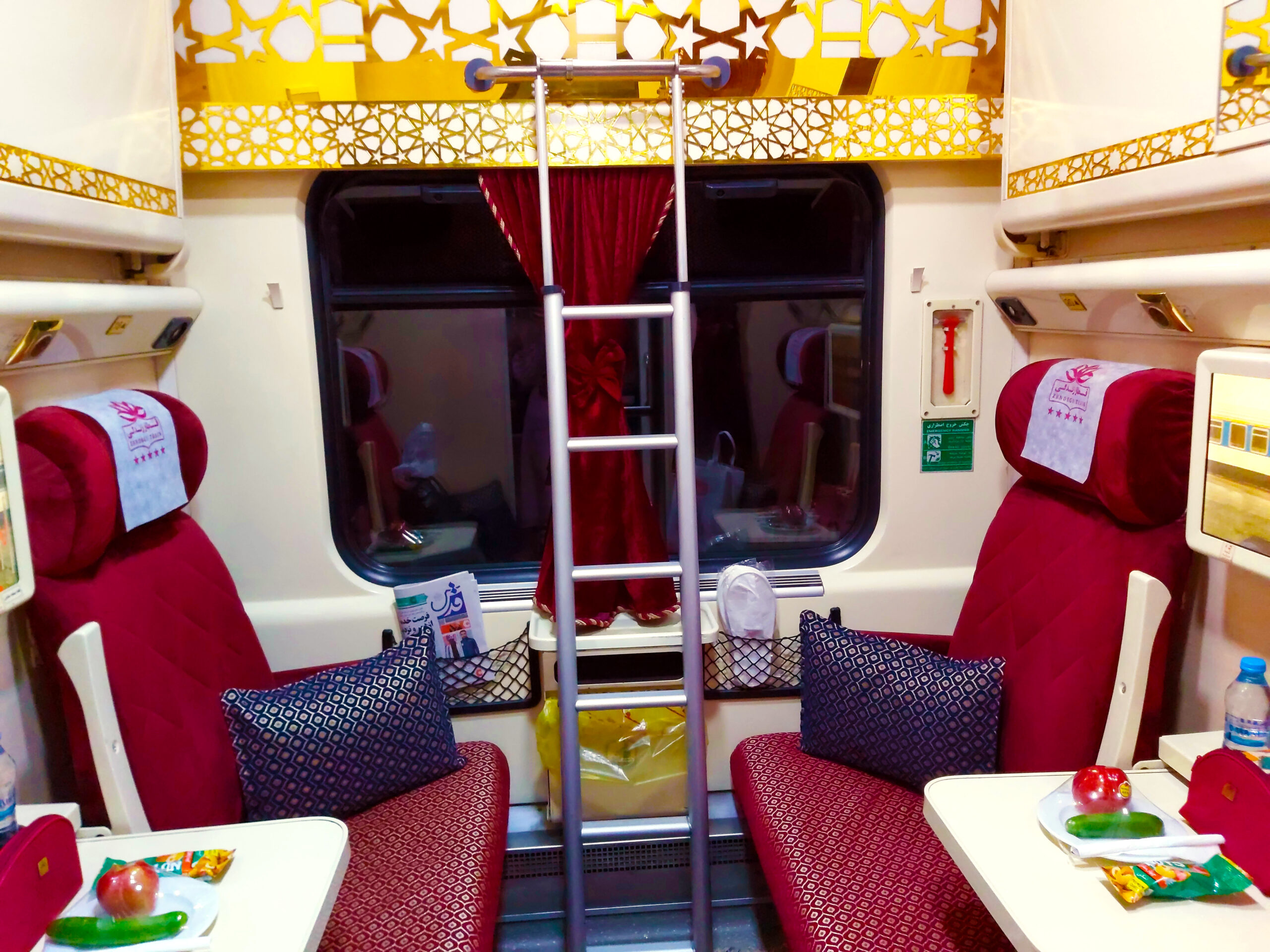
Chinese Double-Decker: Luxury Meets Capacity
The Chinese double-decker train redefines bus-style travel. Split into three sections—upper and lower passenger areas, plus a rear zone for restrooms and crew—it’s air-conditioned and soundproofed. Centralized audio plays movies, and electric heating keeps it cozy. Automatic couplers reduce jolts, enhancing the ride.
Maral: French Bus-Style Elegance
The Maral train, a French import, offers 11 four-berth cabins in a bus-style layout. With air conditioning, steam, and electric heating, plus a single restroom, it’s a hybrid of comfort and efficiency.
Bonyad (Safir): Modern Amenities
Known as Safir, the Bonyad train splits into two five-wagon sets, each with a restaurant. Capacities range from 24 to 72 seats, all air-conditioned with movie playback. It’s a versatile pick for online bookers.
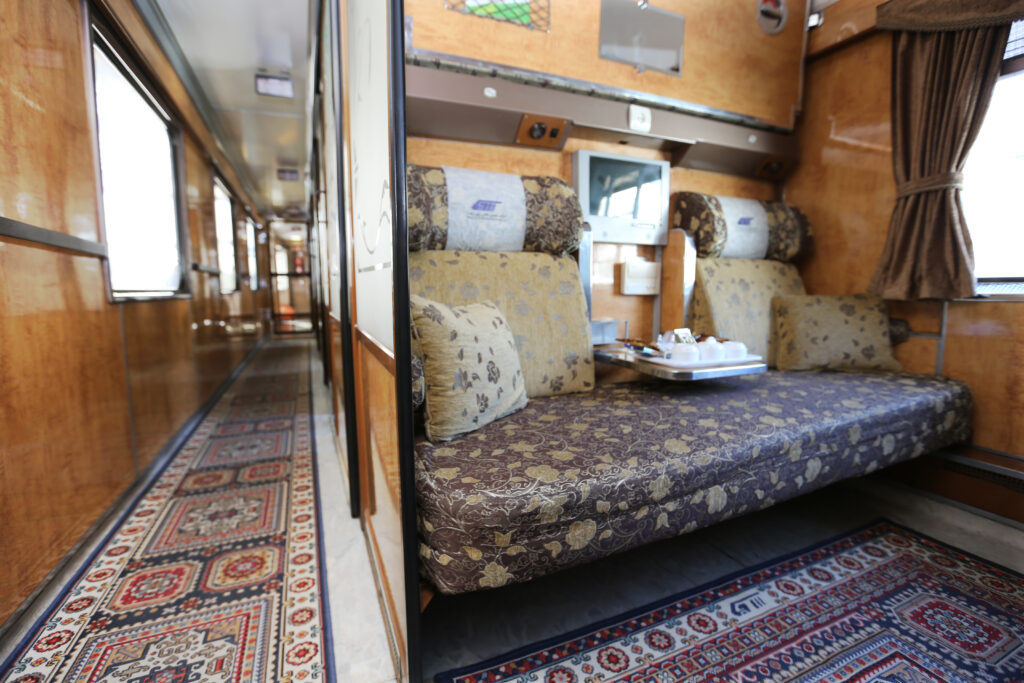
Regular Bus-Style Trains
Basic yet functional, Raja’s regular bus-style trains from West Germany seat 72 or 78 passengers. Lacking air conditioning, they rely on steam heat and open windows—ideal for quick, cheap trips.
Railbus (Eram): Tourism Star
The Railbus, or Eram, shines on scenic routes like Tehran-Qom. With modern interiors, automatic climate control, and a top speed of 120 km/h, it’s built for tourism. Light shows and spacious seating elevate the experience.
Pardis: Iran’s Fastest
The Pardis train, dubbed Iran’s bullet train, hits 160 km/h. Airplane-style seats, full insulation, and automatic air conditioning create a premium feel. Meals are included, and headphone-compatible audio-visual systems entertain. Dual restrooms per wagon seal its status as Raja’s speed king.
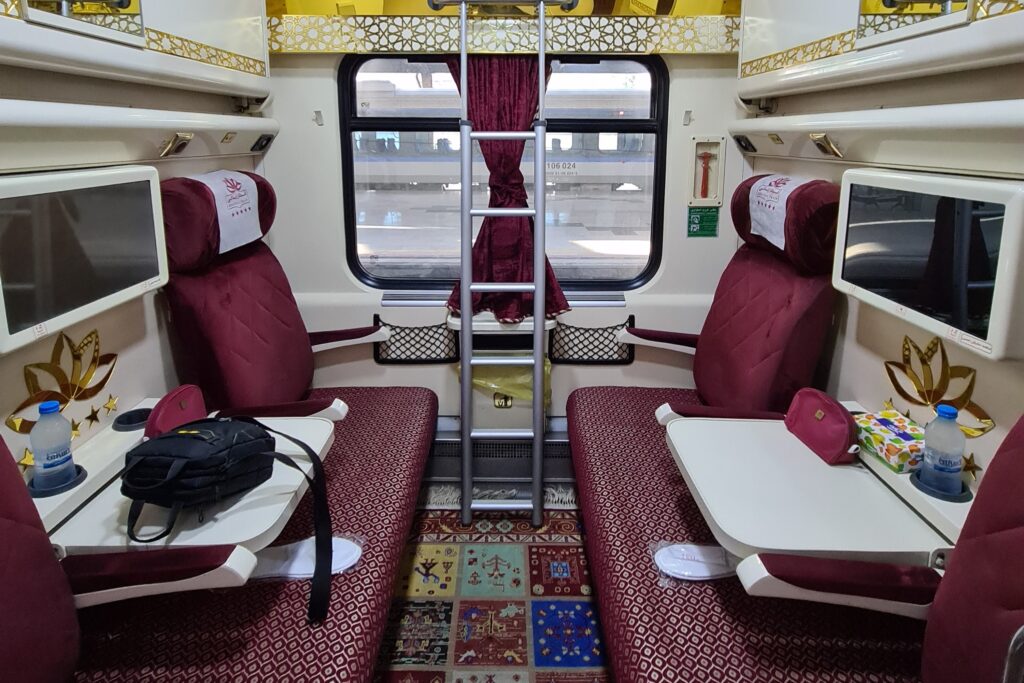
Tips for First-Time Travelers
How do you pick the right train? Consider your route, budget, and comfort needs. Four-star trains like Simorgh suit overnight trips, while bus-style options like Pardis excel on short, fast runs. Book tickets online weeks ahead, especially for popular routes like Tehran-Mashhad, as seats sell out fast. Check meal options—some are included, others cost extra. Bring a charger; most trains offer 220-volt outlets.
Iran’s railways reflect its history and ambition, connecting past and present through every journey. Whether you’re marveling at the Zagros Mountains or savoring a meal aboard, Raja trains promise a window into Iran’s soul. Share your travel tales or photos with us—what’s your favorite route?
